Yemen is one of several countries around the world torn apart by war at the moment. I can only hope the Saudis (supported by the United States) don’t bomb the old city. I wonder if the people in my photos and the friends we made in Yemen are still alive? Since it is not a place you are likely to go for a long time, if ever, I hope you enjoy this description that I’m reposting. We visited Yemen during our circumnavigatio anchoring in Aden, and traveling to San’a, where we spent the night. The sections in quotes are from my book, Voice of a Voyage.
“From the sea, the Yemen landscape is dramatic, with sand dunes slipping up toward jagged rocky peaks a few thousand feet higher. Inland the feeling is of an incredibly forceful land with tall, barren rocky mountains, spires, and mesas jutting up from a sandy plain—dust and rock. In the short rainy season, apparently it is green, but that was hard to imagine during our stay when everything was in shades of brown.”
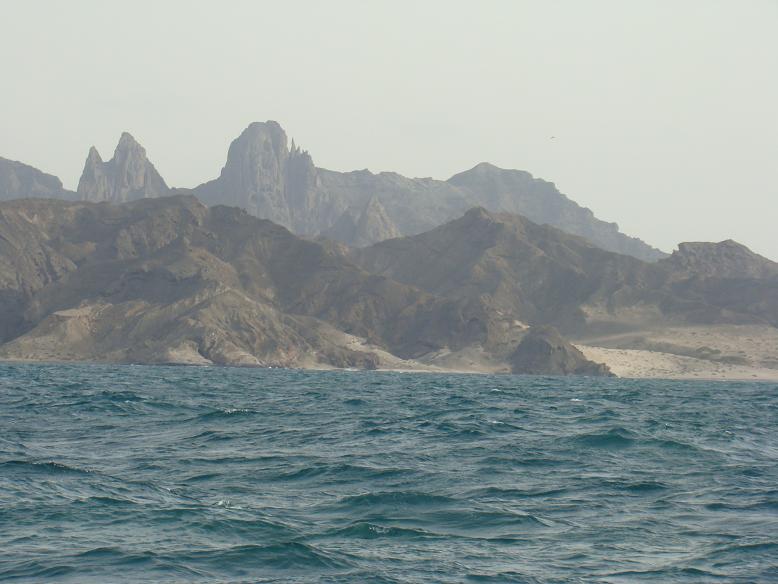
View of the coast as we sailed toward Aden, where we anchored.
“From the sea, the Yemen landscape is dramatic, with sand dunes slipping up toward jagged rocky peaks a few thousand feet higher. Inland the feeling is of an incredibly forceful land with tall, barren rocky mountains, spires, and mesas jutting up from a sandy plain—dust and rock. In the short rainy season, apparently it is green, but that was hard to imagine during our stay when everything was in shades of brown.
The architecture comes from this land with rock and mud bricks creating stair-step meandering buildings wandering up the side of a hill with a fortress on top. Some are relatively new, most are hundreds of years old and in various states of repair, perched along their ridges looking like extensions of the rock. The periodic villages rising up toward ridges and rocky spires were made of the same soil and rock, seeming like a natural extension of the landscape—not really man-made at all, but some other form of this beige landscape, where even the air had a brownish tinge. Many of the older villages with their crumbling forts are remnants of the days of small chiefdoms, falling back to the dust and rock that created them, like the chiefdoms themselves.
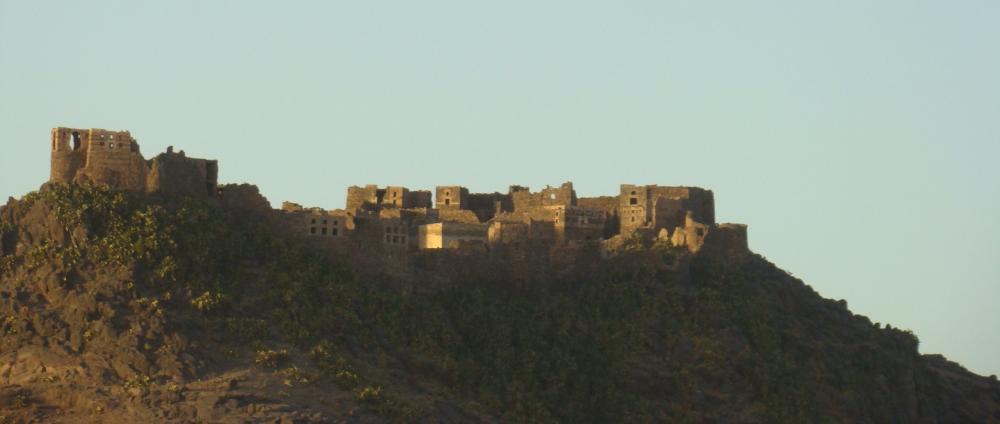
“It was spectacular scenery, but exhausting to my eyes as I studiously tried to make out details through a sandy haze and the ubiquitous layer of reddish-brown dust. The only contrast was the sharp black burqas of the women as they moved about their outdoor tasks. Only these few women, the occasional neatly arranged terraced rock walls, and a rare glimpse of a small patch of irrigated green in a valley below hinted at any human habitation.”
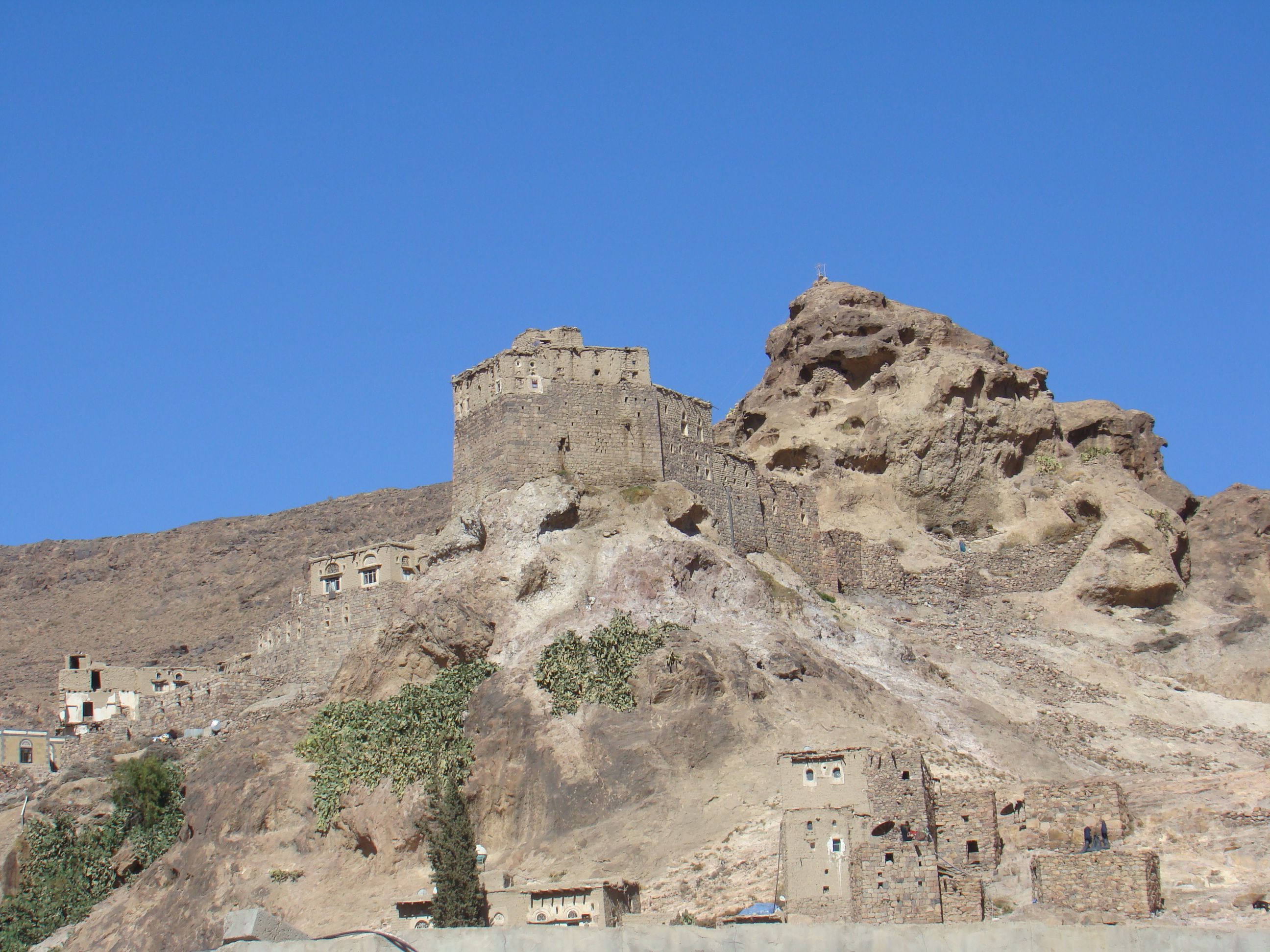
Yemen countryside village.
“Sana’a is the capital of Yemen, one of several countries around the world torn apart by war at the moment. I can only hope the Saudis (supported by the United States) don’t bomb the old city. We traveled to Sana’a with another couple, cruisers also, who live in France and Spain, although Lillian is from the Netherlands, Brian from England. Some of these photos were taken by Lillian, reproduced with her permission. Together we hired Abdullah [false name to protect him, if, in fact, he is still alive; we haven’t been able to contact him for over 1 year] to guide us and make the arrangements for a car and driver.
We went through twelve army and police roadblocks going from Aden to Sana’a and eight on the return trip (a different route). Each time Abdullah gave the officials a copy of our tourist passes, which had our names, nationalities, and passport information, and we were waved through. These roadblocks were for our safety to know if we made it from one point to another—the government wanted no more embarrassment due to dead tourists. [About a month prior to that, in Wadi Dawan, about 180 miles east of Sana’a, two Belgian tourists and their driver were killed by a group of insurgents to embarrass the government.] I wondered what the police or army would have done if we hadn’t turned up at the next roadblock—I suspected it would be nothing. While on our way, we were held at one police roadblock because of a demonstration ahead. They were concerned for our safety and were considering giving us a police escort. After an hour, they decided it was safe for us to proceed on our own. Not surprisingly, we weren’t allowed to take photos of the military checkpoints.”
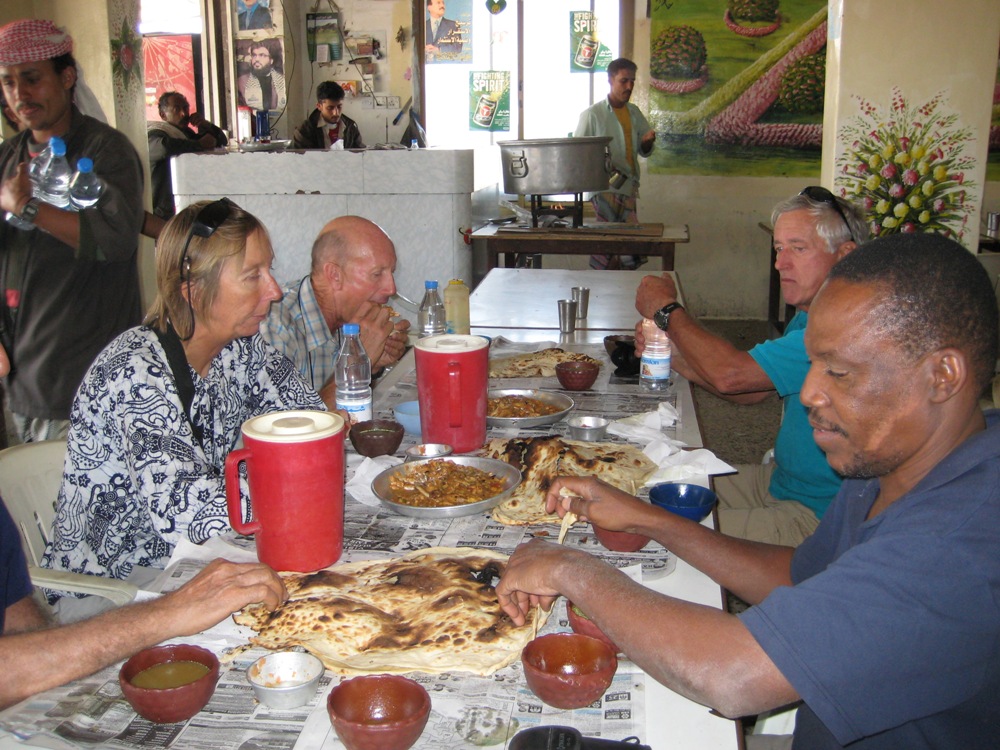
Lunch on the way.
It’s one of the oldest continuously inhabited cities in the world—over 2,500 years—and certainly one of the most interesting architecturally. “Although rebuilt, renovated, and added to over the eons, it retained the feeling of a centuries-old settlement. The buildings were from five to nine stories tall, starting with stonework, then mounted with clay bricks and decorated with light-colored plaster trimming the windows and doors. It was as if the brown-red land was molded together in tall box-like formations and then extensively decorated with the most intricate, delicate, and graceful white icing accenting various features. This embellishment contained small traditional Arabic details of vines, flowers, and geometric designs. The old city was also fascinating for the glimpse of life lived there. The plazas and walking streets pulsated with activity, conversation, the business of living.”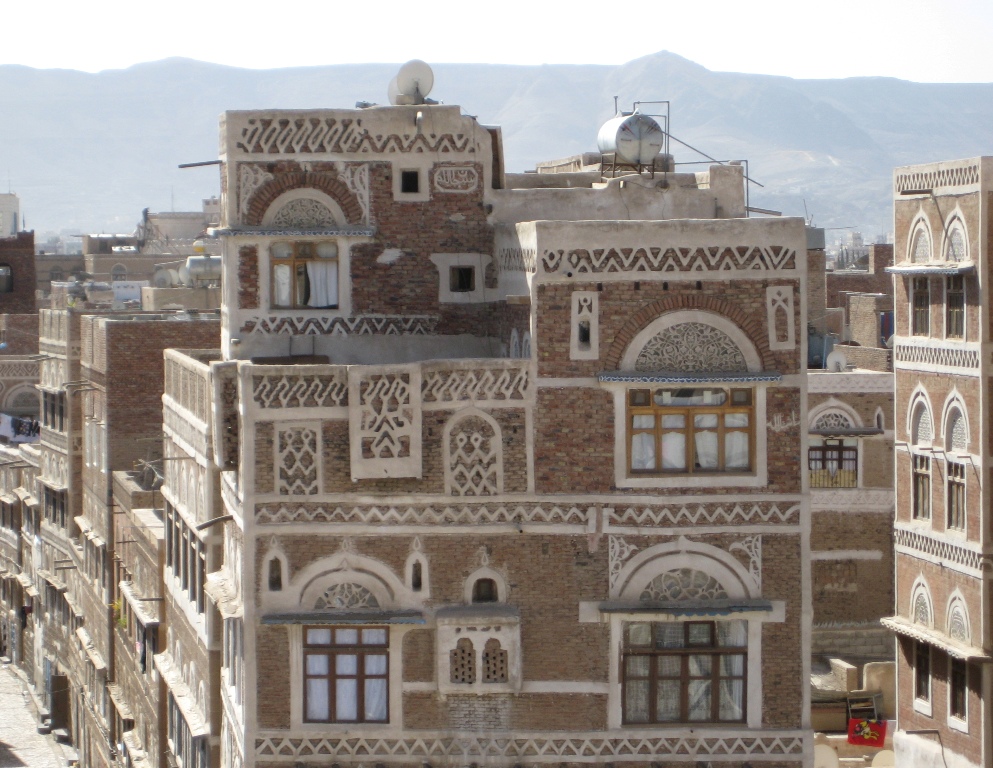
Notice the solar water heaters on the roofs.
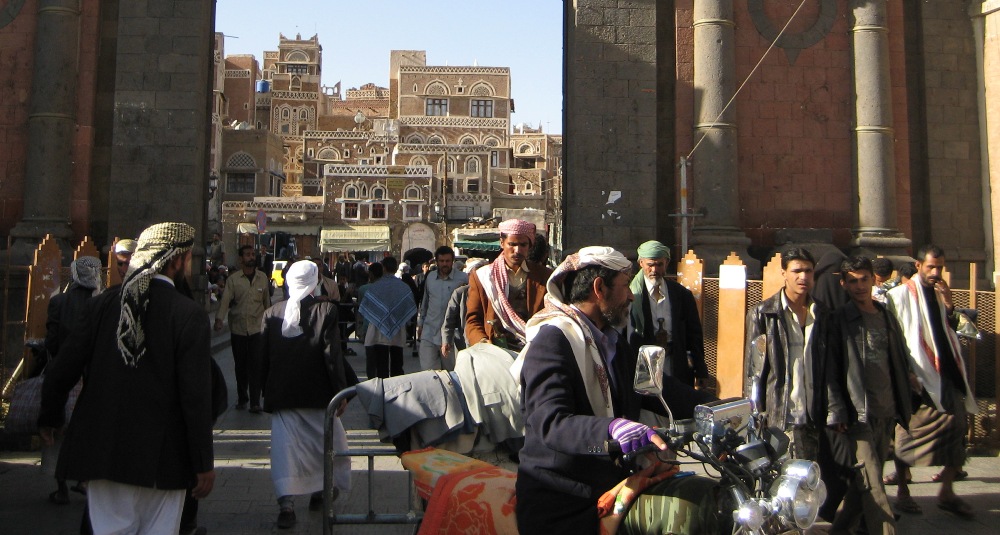
Entrance gate to the old city. Note that there are only men. We did see women in the shopping area inside the gated area.
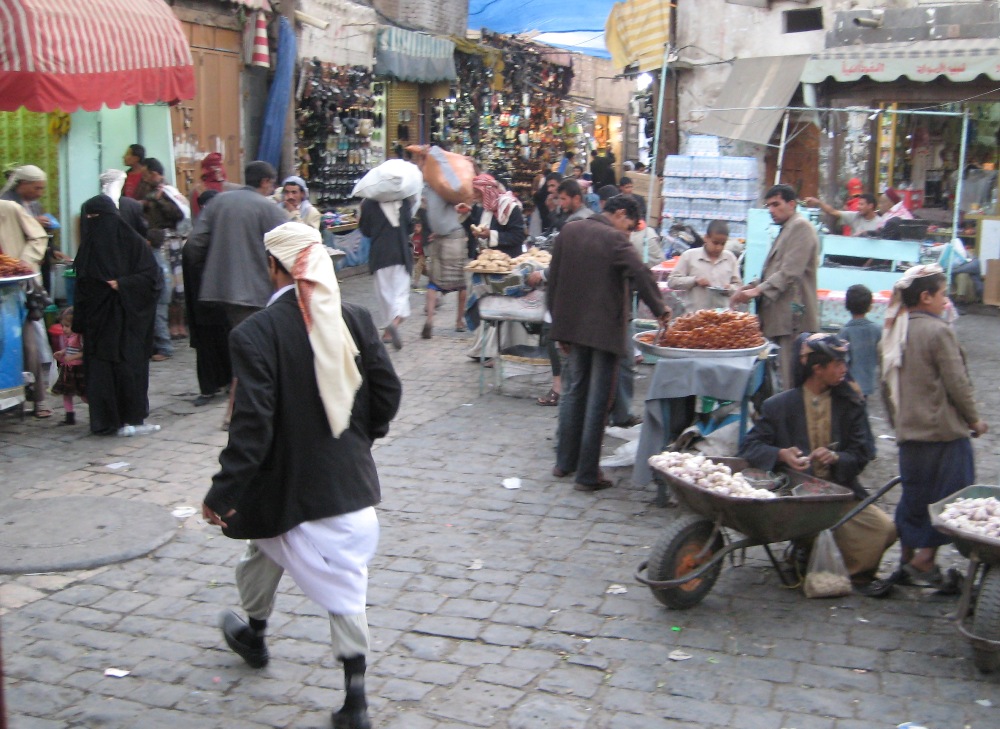
A busy walking street, except there were also motorcycles, scooters, and, of course, wheelbarrows filled with garlic. Note, too, a few women.

I wonder how many of the people in my photos and the friends we made in Yemen are still alive?
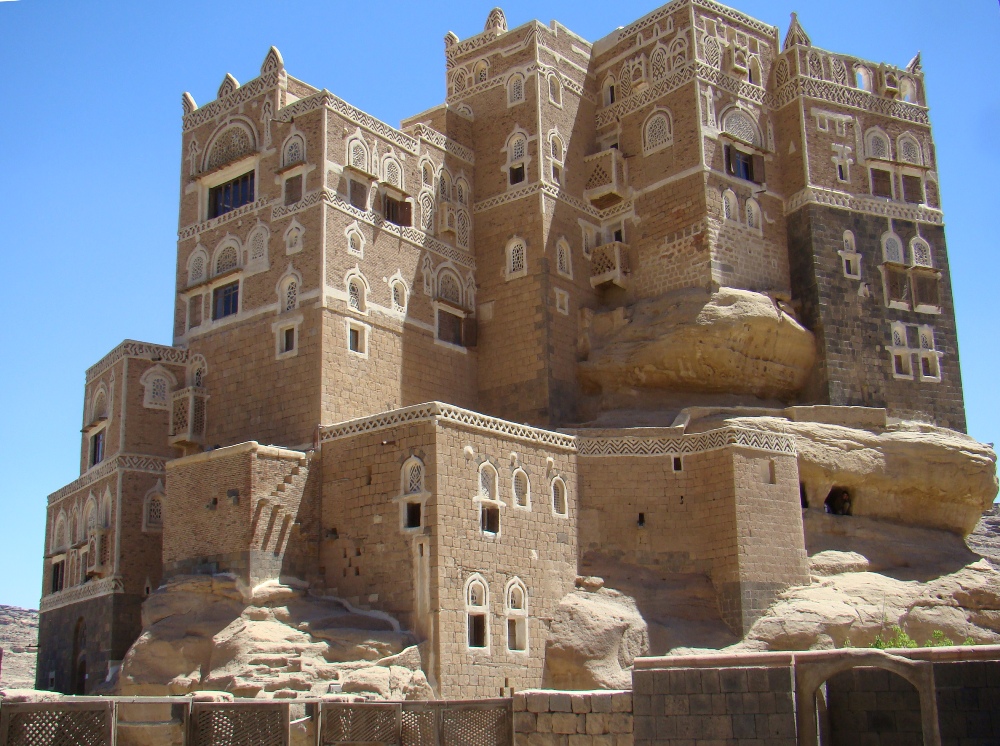
The old Iman’s Palace on the outskirts of the main city.
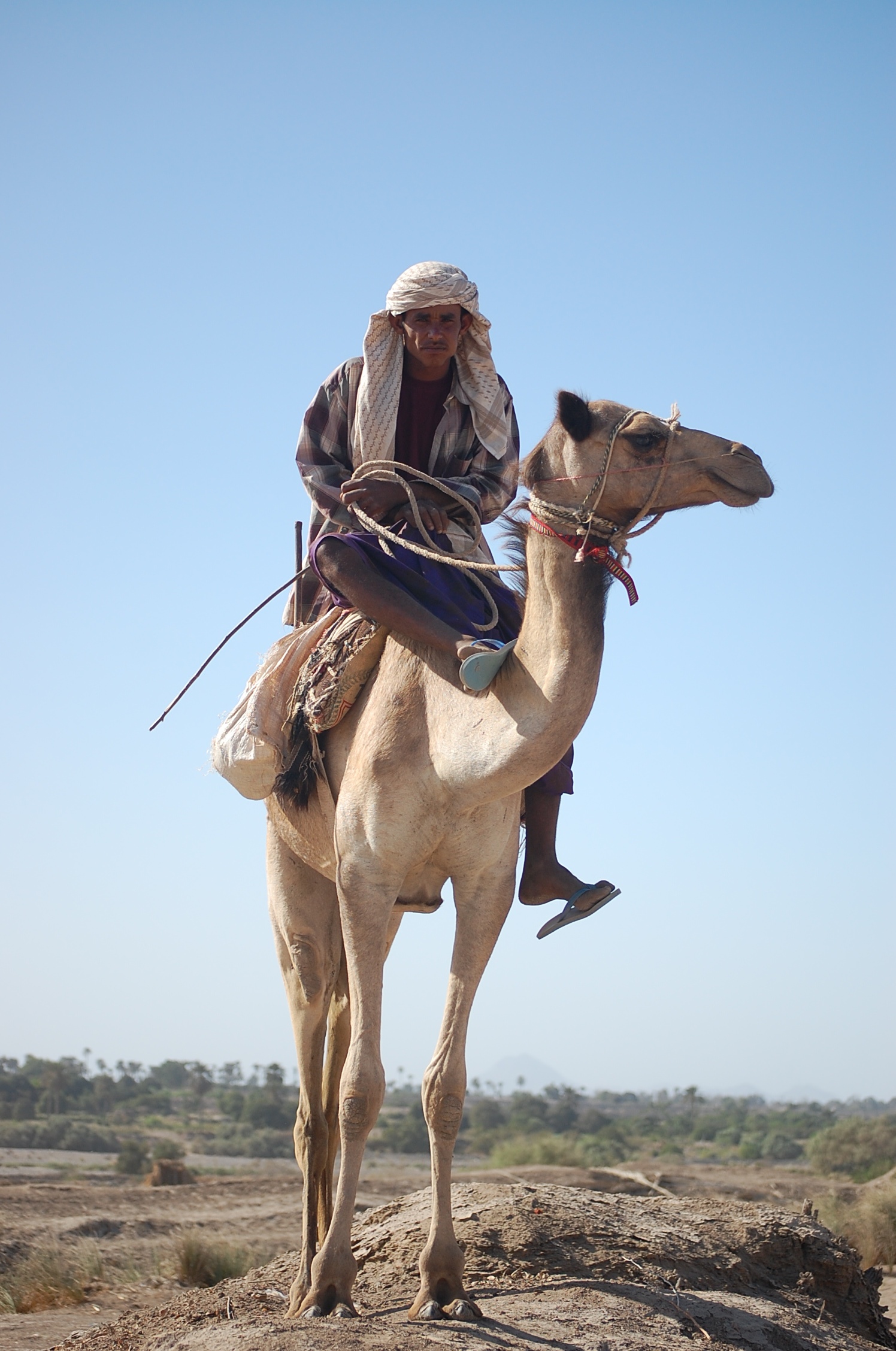
We stopped to visit with a small group of camel herders on the way back from Sana’a.
